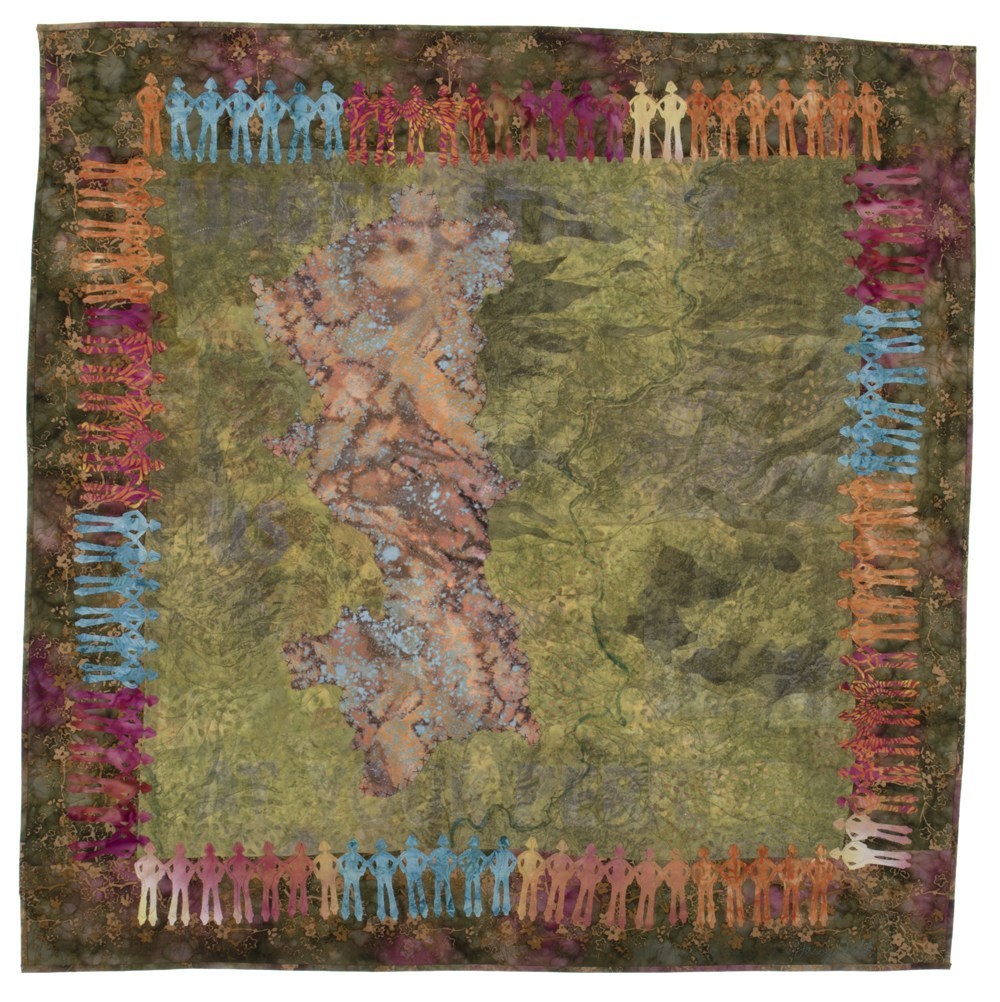
We Learned to Be Fierce
About this artwork
Barbara Kingsolver’s very first book, Holding the Line, tells the stories of the women who helped to hold the strike line from 1983-1986 at the Phelps Dodge Morenci Mine. I have been researching stories of women who exercised their power and were transformed by their experiences; I thought the story of the Morenci Miners Women’s Auxiliary and their role in that period’s copper strike was worth revisiting.
The few women who worked in jobs in the mine prior to the strike endured predatory sexual harassment, terribly dangerous working conditions, and highly inadequate safety equipment, yet they persisted. In 1983 after the strike began, members of the women’s auxiliary – who had previously played a supporting role in strikes – started to take a more active role. Those women held the strike line when the courts limited the number of strikers who were allowed on the line. All the picketers, including those women, were harassed, attacked and stalked, but they gave as good as they got. Many were radicalized, some were arrested, and others traveled around the U.S. giving speeches to garner support for the strike. As a result, women who had once played more traditional roles in their families and community discovered their voices and their independence.
The message, “Underestimate us at your peril” is printed on the surface of this piece with ultraviolet-activated acrylic paint. The ultraviolet component is an acknowledgement that women’s voices have historically been discounted, ignored or misheard. One must look carefully and listen closely to hear those voices, but they are unmistakably present. (The ultraviolet component must be viewed in person.)
The center of the piece is an aerial view of the mine and the surrounding landscape, printed on hand-dyed silk organza. The San Francisco River, which played a major role in the region’s dramatic history in 1983 by flooding the town of Clifton, is also depicted. The ninety-nine paper doll “miners” represent the maximum number of strikers who were allowed to picket outside the mine.
The years-long conflict became a cornerstone in the transformation of labor law in the United States. For more information, I recommend Kingsolver’s Holding the Line, and Jonathan D. Rosenblum’s book, Copper Crucible. A chapter about the MMWA’s role in the strike written by Anna Ochoa O’Leary, one of the leaders of the MMWA and now Associate Professor, Head of Mexican American Studies, and Co-Director of the Binational Migration Institute at the University of Arizona, was recently published in Mexican Workers and the Making of Arizona (2018, The University of Arizona Press).
36″ h x 35″ w
This stitched textile collage comes unframed, with a sleeve and a piece of wood that attaches to the wall.
We Learned to Be Fierce

Unbridled and exuberant
A Unique Work of Art
Aesthetic Storytelling
Hand-crafted
The Power of Collage

